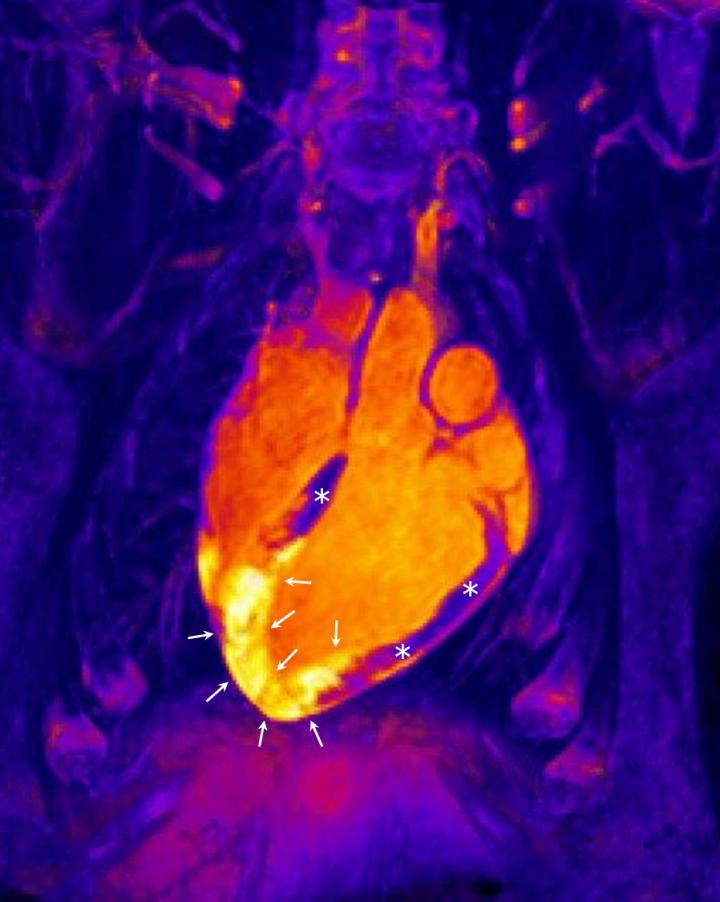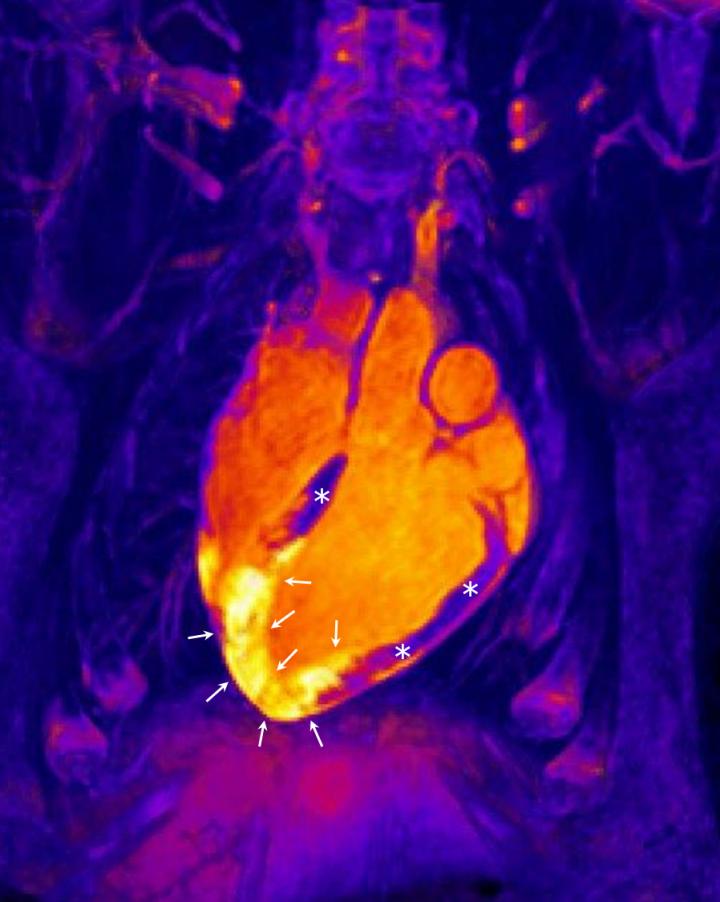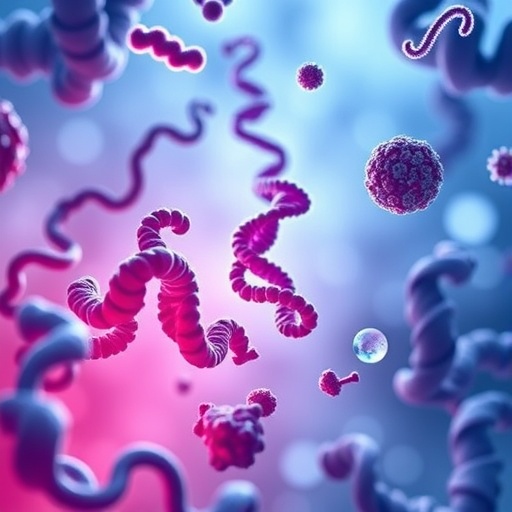
Credit: CNIC
Scientists at the Centro Nacional de Investigaciones Cardiovasculares Carlos III (CNIC) and the Fundación Jiménez Díaz (FJD) and Salamanca University Hospitals have demonstrated that the response of the human heart to an infarction is very different to what was previously thought. The study, led by cardiologist Borja Ibáñez and published in 2 independent articles in the leading journals Circulation and Circulation Research, overturns the established view that an infarction is followed by progressive repair of the myocardium.
For many years, scientists have assumed that a heart attack is followed immediately by an inflammatory response featuring increases in water content and cellular infiltration and that this response remains stable for at least 1 week and then progressively dissipates. Two years ago, the research team behind the new studies published a series of animal studies that challenged this view, but the most important challenge remained: to validate the new findings in human patients. The new studies used the most advanced magnetic resonance imaging (MRI) technology to demonstrate that the human heart produces 2 well-differentiated edematous reactions occurring at distinct times after an infarction. These results have immediate clinical implications for ongoing clinical trials and could form the basis of future studies focused on the specific modulation of each of these independent edematous phases.
The project came out of research started more than 10 years ago at the Mount Sinai Hospital in New York, directed by renowned cardiologist Valentín Fuster, who is an author on both of the new CNIC-led studies. Two years ago, the CNIC and the FJD University Hospital signed a collaboration agreement to coordinate their studies of cardiac muscle after an acute myocardial infarction. The collaboration is directed by Borja Ibáñez, who is both Director of Clinical Research at the CNIC and a cardiologist at FJD University Hospital, and has led to a prolific scientific production. Rodrigo Fernández-Jiménez, first author on both studies, explained that "surprisingly, we still know very little about how the myocardium reacts to an infarction, and it is only through the use of MRI, which allows noninvasive, millimeter-resolution mapping of tissue composition, that we are beginning to understand many of its mysteries."
The bimodal postinfarction inflammatory reaction was first demonstrated in animals in 2015, but this left the much more difficult challenge of demonstrating that the same phenomenon occurs in patients. Undertaking such a study required a special set up that would allow detailed MRI studies to be carried out immediately after the re-establishment of blood flow through the blocked coronary artery in heart attack patients. This requires highly complex technology and is therefore possible in only a handful of centers. One center with the technology and expertise to carry out this type of study is the university hospital in Salamanca. As chief cardiologist Pedro Luis Sánchez explained "we've been able to carry out this work thanks to the enthusiasm and commitment of everyone in the service. Heart attacks can happen at any time of day or night or at weekends, and for this study we needed to do the first MRI scan within 3 hours of fitting a stent in the blocked artery to re-establish blood flow. Patients are particularly vulnerable during this period, so in addition to the expert MRI specialists, we also needed a full clinical support team on hand to provide continuous care during the examination period."
Pioneering study
The study is the first in the world to study heart attack patients by MRI so soon after the re-establishment of blood flow. In addition to studies in patients, the team have also extended their investigation of infarction in pigs, the experimental model most similar to humans. The unique translational research infrastructure at the CNIC includes identical imaging equipment for human and animal studies, allowing the team to demonstrate that treatments during an infarction can change the composition of the cardiac muscle during the first hours after reperfusion, resulting in a much more rapid recovery of the heart. In the words of Dr. Fernández-Jiménez, "MRI provides an extraordinary ability to noninvasively visualize events occurring after an infarction in real time, including inflammation, tissue volume expansion, hemorrhage, and obstruction of the microcirculation."
According to Dr. Ibáñez, who recently won the Fundación Banco Sabadell Biomedical Research Prize, the discovery of the bimodal inflammatory response in the human heart "forces us to think about the best timing for MRI scans used in clinical trials to quantify irreversible injury and to monitor the effectiveness of interventions to reduce this injury. Until now this question was not considered important, and cardiac imaging studies have been conducted on any day in the postinfarction period. The new findings show that the optimal time for these scans is between postinfarction days 4 and 7, when the second inflammatory/edematous wave is prominent and affects the entire region that was shut off from the blood supply during the infarction."
This research project was possible thanks to the unique research infrastructure at the CNIC, which boasts imaging analysis equipment unrivalled anywhere in Europe, all at the service of leading international research groups. CNIC General Director Dr. Fuster commented "We invested in the best imaging technology in order to study biological and clinical processes from a totally new perspective." This unique technology is allowing translational researchers to address clinically relevant questions in a way that greatly accelerates the pace of research.
Another essential element of this research endeavor is the scientific collaboration between the CNIC and technology partner Philips Iberia. Physicist Javier Sánchez-González, a Philips researcher embedded at the CNIC, leads the technological development of these cardiac imaging projects, and his input is essential for transferring the initial findings from the CNIC to collaborating hospitals, so that the new algorithms can be tested in a clinical environment. Recently, the consortium formed by the CNIC, the FJD and Salamanca university hospitals, and Philips was awarded funding under the Carlos III Institute of Health's technology development program for the development of new three-dimensional cardiac resonance sequences.
###
About the CNIC
The Centro Nacional de Investigaciones Cardiovasculares (CNIC), directed by Dr. Valentín Fuster, is dedicated to cardiovascular research and the translation of knowledge gained into real benefits for patients. The CNIC, recognized by the Spanish government as a Severo Ochoa center of excellence, is financed through a pioneering public-private partnership between the government (through the Carlos III Institute of Health) and the Pro-CNIC Foundation, which brings together 14 of the most important Spanish private companies.
IIS-FJD
The Fundación Jiménez Díaz Health Research Institute (IIS-FJD in its Spanish initials) is a multidisciplinary and translational biomedical research platform that embraces basic and clinical research and epidemiology in the health service arena. The IIS-FJD includes the basic and clinical research groups at the FJD University Hospital, other groups from the Infanta Elena and Rey Juan Carlos university hospitals and Villabla general hospital, and research and teaching staff from the Universidad Autónoma de Madrid, the Centro de Investigaciones Energéticas, Medioambientales y Tecnológicas, and the Universidad Rey Juan Carlos. The IIS-FJD's mission is to promote and drive research, scientific and technological knowledge, and teaching and training in hospitals. This approach creates synergies and supports the development of an integrated research program bringing leading biomedical researchers together in a way that avoids the barriers associated with traditional departmental assignations.
CIBERCV
The CIBERCV research network is formed by 40 research groups from 24 associated centers, selected on the basis of scientific excellence. The network is grouped into 6 research lines focused on the main challenges in cardiovascular health. Of these, 4 are thematic (myocardial injury, arterial disease, heart failure, and structural heart disease) and 2 are cross-disciplinary (biomarkers and platforms and epidemiology and cardiovascular prevention).
Media Contact
Fatima Lois
[email protected]
34-639-282-477
@@CNIC_CARDIO
http://www.cnic.es
Related Journal Article
http://dx.doi.org/10.1161/CIRCULATIONAHA.116.025582





